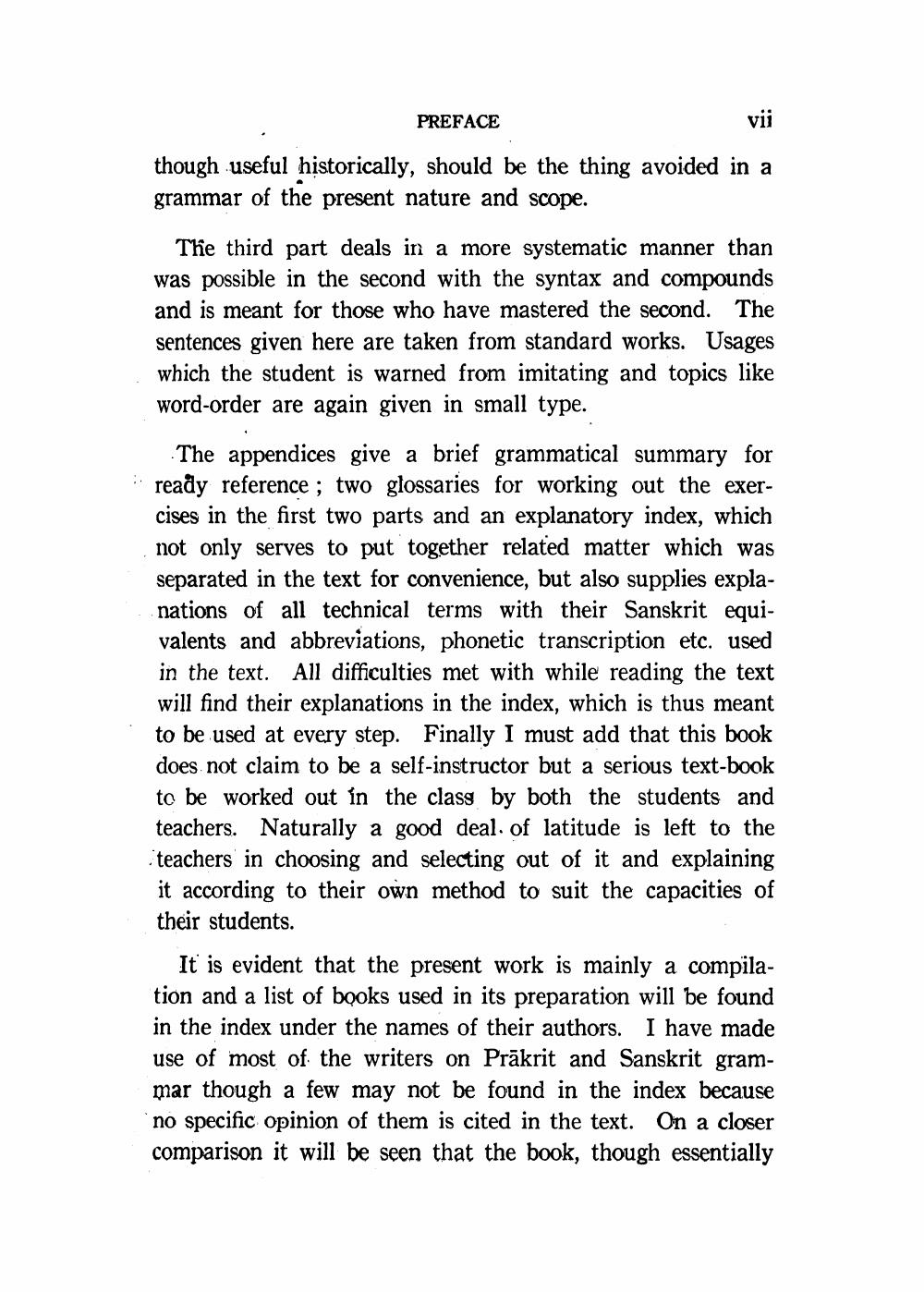________________
vii
PREFACE though useful historically, should be the thing avoided in a grammar of the present nature and scope.
The third part deals in a more systematic manner than was possible in the second with the syntax and compounds and is meant for those who have mastered the second. The sentences given here are taken from standard works. Usages which the student is warned from imitating and topics like word-order are again given in small type.
The appendices give a brief grammatical summary for ready reference ; two glossaries for working out the exercises in the first two parts and an explanatory index, which not only serves to put together related matter which was separated in the text for convenience, but also supplies explanations of all technical terms with their Sanskrit equivalents and abbreviations, phonetic transcription etc. used in the text. All difficulties met with while reading the text will find their explanations in the index, which is thus meant to be used at every step. Finally I must add that this book does not claim to be a self-instructor but a serious text-book to be worked out in the class by both the students and teachers. Naturally a good deal. of latitude is left to the teachers in choosing and selecting out of it and explaining it according to their own method to suit the capacities of their students.
It is evident that the present work is mainly a compilation and a list of books used in its preparation will be found in the index under the names of their authors. I have made use of most of the writers on Prākrit and Sanskrit grammar though a few may not be found in the index because no specific opinion of them is cited in the text. On a closer comparison it will be seen that the book, though essentially




